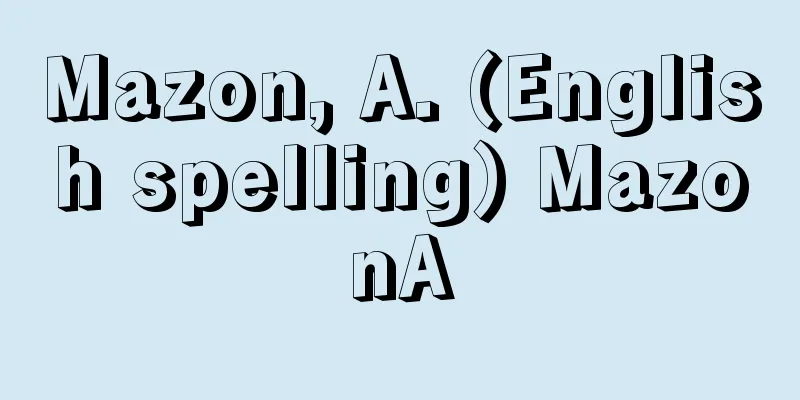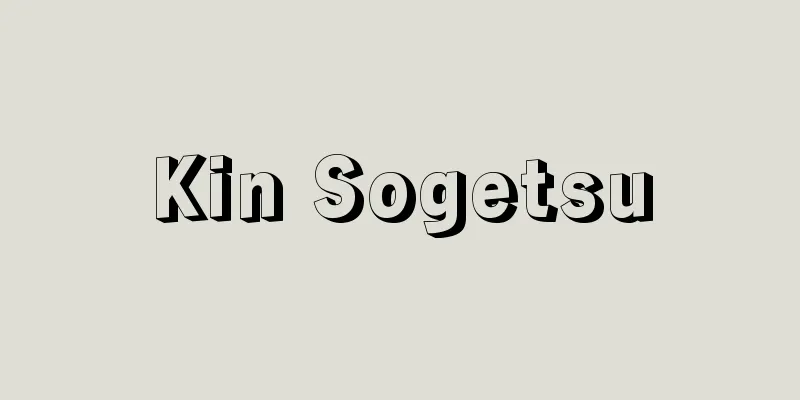Ibuse Masuji - Ibuse

|
Novelist. Real name Masuji. Born on February 15, 1898, as the second son of a landowner in Kamo Village, Fukayasu County, Hiroshima Prefecture (present-day Fukuyama City). His father died when he was young, and he grew up surrounded by the love of his grandfather. After graduating from Fukuyama Middle School, he entered the preparatory school for Waseda University in 1919 (Taisho 8) and advanced to the French literature department, but ultimately did not graduate. After graduating from middle school, he aspired to be a painter, and was briefly enrolled at the Japan Art School. During his university years, he visited Iwano Homei, and also became acquainted with classmate Aoki Nanpachi, working hard on his paintings. After leaving university, he had a long and difficult period of literary training, moving from one coterie magazine to another and working for a publishing company, and finally gained recognition in the literary world when he published "Koi" (Carp) in Mita Bungaku in 1928 (Showa 3) and "Sanzhouo" (Sanzhouo) in Bungei Toshi the following year (both works were revisions of previously published works). He was later counted as a member of the Shinko Geijutsu-ha (New Art School), and established his status in the literary world by publishing two collections of his original works, "Yofuke to Ume no Hana" (The Night and the Plum Blossoms) (Shinko Geijutsu-ha Sosho) and "Natsukashiki Genjitsu" (New Era Literature Sosho) in 1930. He then turned his hand to medium- and long-length novels, and showed his maturity as a writer with works such as "The River" (1931-32), "The Drifting Tale of Manjiro Jiyon" (1937, winner of the Naoki Prize), "The Tale of the Sazanami War" (1931-38), and "Tajinkomura" (1939). During the war, in 1941, he was sent to Singapore as an army conscript, returning to Japan the following year, and evacuated first to Kofu and then to his hometown of Kamomura from 1944 to 1945. After the war, he resumed his vigorous creative activity, writing novels critical of the war, such as "Two Stories" and "Wabisuke" in 1946 (Showa 21), and "Chief Worshiper" (1950), as well as genre stories such as "The Hungry to Move" (1948) and "Closed Today" (1949-50). In the novels, he worked on "Hyōmin Usaburo" (1954-55) and "Chinpin-do Shujin" (1959), before reaching the height of his masterpiece "Kuroi Ame" (Black Rain) (1965-66), which dealt with the atomic bomb. Ibuse's literature has had a mature air from an early age, and there is a unique flavor to the humor that softens his cold-hearted gaze. In terms of subject matter, his works can be divided into three categories: those about the country, those about the city, and those about history, but throughout them all, he thoroughly focused on the joys and sorrows of the Japanese common people, and expressed severe anger toward the forces that destroy the lives of the common people, such as war and the military. He loved traveling and fishing, and was fond of painting, shogi, and sake. He also wrote many collections of essays and one book of poetry. In 1966, he was awarded the Order of Culture. He is a member of the Japan Art Academy. [Hideo Isogai] "The Complete Works of Ibuse Masuji, 14 volumes (1964-75, Chikuma Shobo)" ▽ "On Ibuse Masuji, by Matsumoto Tsuruo (1978, Fuyukisha)" ▽ "The Literature of Ibuse Masuji, by Ogoe Yoshishichi (1980, Hosei University Press)" ▽ "Personal Notes on Ibuse Masuji, by Wakuda Yu (1981, Meiji Shoin)" [References] | | |Source: Shogakukan Encyclopedia Nipponica About Encyclopedia Nipponica Information | Legend |
|
小説家。本名満寿二(ますじ)。明治31年2月15日、広島県深安郡加茂村(現福山市)に地主の次男として生まれた。幼時に父に死別、祖父に愛されて育った。福山中学校を経て、1919年(大正8)に早稲田(わせだ)大学予科に入り、仏文科に進学したが、結局卒業しなかった。中学校卒業後は画家を志したこともあり、一時、日本美術学校にも籍を置いた。大学時代には岩野泡鳴(ほうめい)を訪ね、また、同級生青木南八に親しんで、習作に努めている。大学を辞めてからは、同人雑誌を転々としたり、出版社に勤めたりして、長く苦難の文学修業時代をもち、1928年(昭和3)に『鯉(こい)』を『三田文学』に、翌年『山椒魚(さんしょううお)』を『文芸都市』に発表したころから(両作品とも既発表作を改稿したもの)ようやく文壇に認められた。のち新興芸術派の一員に数えられ、30年に『夜ふけと梅の花』(新興芸術派叢書(そうしょ))、『なつかしき現実』(新鋭文学叢書)の両創作集を相次いで出して、文壇的地位を確立した。その後、中・長編にも手を染め、『川』(1931~32)、『ジヨン万次郎漂流記』(1937。直木賞受賞)、『さざなみ軍記』(1931~38)、『多甚古村(たじんこむら)』(1939)などを書いて、作家としての成熟をみせた。戦時の41年には陸軍徴用員としてシンガポールに派遣され、翌年帰国、44年から45年にかけて、まず甲府へ、ついで郷里加茂村に疎開した。戦後、旺盛(おうせい)な創作活動を復活させ、46年(昭和21)の『二つの話』『佗助(わびすけ)』をはじめとして『遙拝(ようはい)隊長』(1950)に至る戦時批判小説のほか、『引越やつれ』(1948)、『本日休診』(1949~50)などの風俗物にも健筆を振るった。長編では、『漂民宇三郎』(1954~55)、『珍品堂主人』(1959)などを経て、原爆を扱った大作『黒い雨』(1965~66)の高みに達した。井伏文学は、早くから老成した風格があり、その冷徹な目を和らげるユーモアに独特の味がある。素材的に、在所物、都会物、歴史物の三つに分けることができるが、すべてを通じて、彼が徹底して見つめていたのは、日本の庶民の哀歓であり、庶民の生活を破壊するような力――戦争、軍隊などには、厳しい怒りを現した。旅と釣りを愛し、絵、将棋、酒をたしなみ、随筆集も数多く、詩集も1冊ある。66年、文化勲章受章。日本芸術院会員。 [磯貝英夫] 『『井伏鱒二全集』全14巻(1964~75・筑摩書房)』▽『松本鶴雄著『井伏鱒二論』(1978・冬樹社)』▽『大越嘉七著『井伏鱒二の文学』(1980・法政大学出版局)』▽『涌田佑著『私注・井伏鱒二』(1981・明治書院)』 [参照項目] | | |出典 小学館 日本大百科全書(ニッポニカ)日本大百科全書(ニッポニカ)について 情報 | 凡例 |
Recommend
Kouros (English spelling)
A Greek word meaning "youth." It refers ...
San Miguelia
...Due to the way fossils are found, there are th...
Wettability
…It is often seen with plastic models that plasti...
Three Non-Nuclear Principles
Japan's basic policy on nuclear weapons is to...
Clogs - Ashida
In modern times, it refers to geta with high teet...
Landfriedensgesetz (Land peace decree)
In medieval Europe, especially in Germany, peace l...
Gesta Danorum (English spelling)
…He attempted to pacify the Baltic Sea region, wh...
primitive recursive function
...In 1931, K. Gödel first formulated it as a pri...
Enkoji Tomb
…The Abu River, which flows northwest through the...
Milnor, JW
...Analysis on differential manifolds is an impor...
Avoidance - Kihi
In cases where a judge has a special relationship...
Seibu - Saimu
Date of birth and death unknown. A haiku poet of ...
Arsenopyrite (English spelling: arsenopyrite)
Also known as poisonous sand. A mineral with the i...
Mizunira - Mizura
This perennial, bright green, soft aquatic plant g...
Autostrada del Sole - Autostrada del Sole
…The 755 km long highway that runs from Milan to ...









